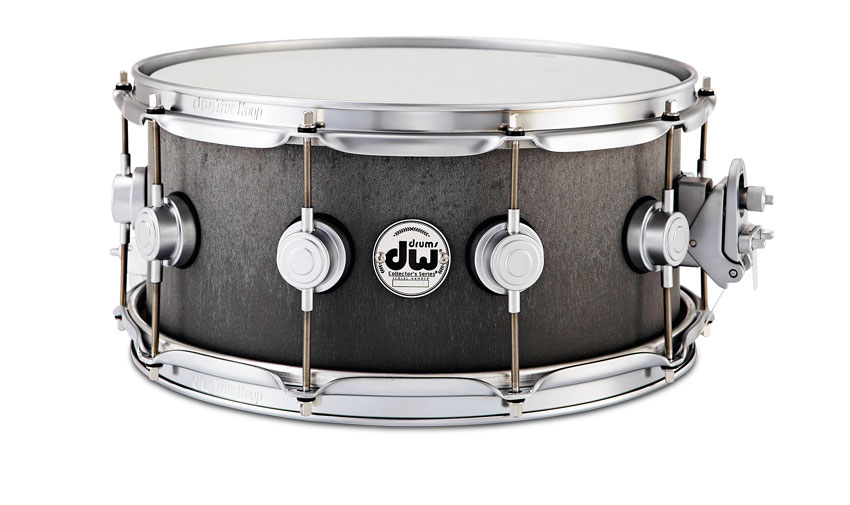MusicRadar Verdict
DW has always pushed boundaries and this drum is another example of its willingness to experiment. A concrete shell makes a loud, solid and authoritative - if pricey - alternative to a traditional snare.
Pros
- +
Not just a gimmick - it sounds great. Unique. Top build quality.
Cons
- -
Expensive.
MusicRadar's got your back
While there is no shortage of alternatives to traditional shell materials on the market, DW's concrete snare must surely be one of the less obvious choices. Referencing neither wood, metal nor acrylic, DW has created a drum that is different with a capital 'D'.
Build
"Technically the shells are actually made of soapstone, a more refined alternative to concrete"
While researching the possibility of producing cobalt shells (thus far prohibitively expensive), DW discovered that concrete is remarkably similar in sonic terms to cobalt, and so the concrete snare was born. Two models are available: 14"x51⁄2" and 14"x61⁄2". Of these, Rhythm was sent the deeper drum.
Technically the shells are actually made of soapstone, a more refined alternative to concrete, which has been used for centuries as a carving material. The soapstone is mixed with a proprietary polymer and then cast into individual shells.
Cast shells are seamless, making them extremely strong. Bearing edges are cut at DW's regular 45° with a small back-cut. Despite a relatively thin shell thickness of 5.5mm, the review drum still feels noticeably heavy.
Hands On
"Each drum is guaranteed to be different from any other due to natural variations in the curing process"
The exterior of each shell is polished to a lustre, with each drum guaranteed to be different from any other due to natural variations in the curing process. DW's satin chrome finish coats every piece of shell hardware except the tension rods, giving the drum an elegant, even sophisticated look.
As promised, concrete has a sound all of its own: sharp like metal but not too bright along with woody thickness but with less warmth. Hit dead centre, the response is dry - bone dry when the tuning is cranked up - with just a hint of an overtone colouring the note. Edge the sticks away from the middle and the sound gradually loosens, with increased sensitivity from the snare wires jostling with a sympathetic metallic ring.
Aside from concrete's unique tonal qualities, its most dominant characteristic would appear to be its volume. While the drum is undoubtedly musical enough to be played in all manner of quiet ways (cross-sticking is sparklingly clear, for instance) it's at its most potent slamming out backbeats. Here it delivers a ferocious bark that piledrives through pretty much anything within its vicinity.
Want all the hottest music and gear news, reviews, deals, features and more, direct to your inbox? Sign up here.
